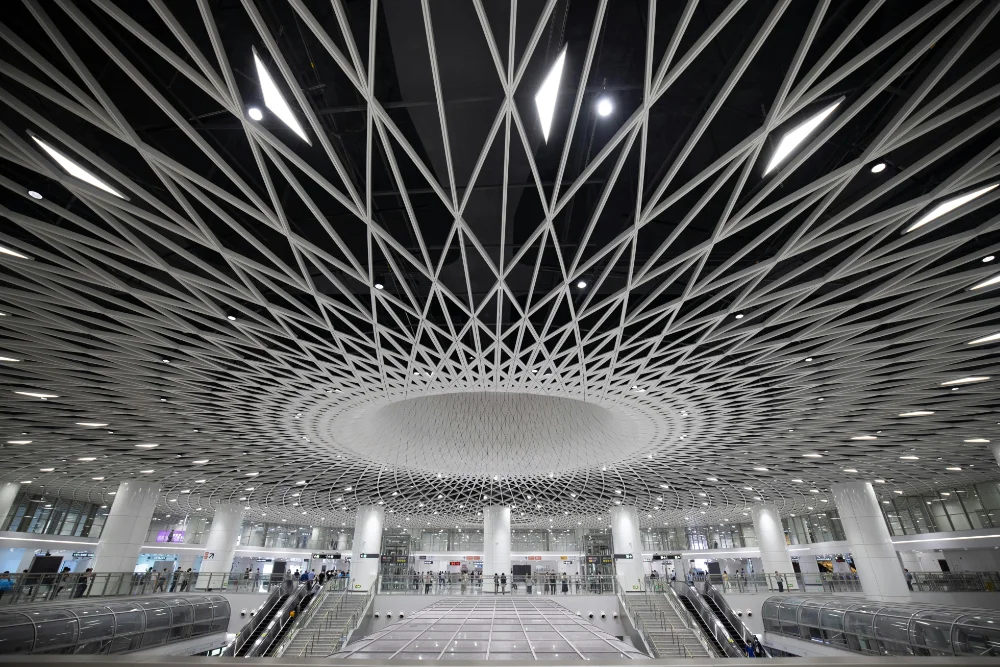The Belt and Road Initiative: What It Means for Global Investors

The Belt and Road Initiative (BRI), launched by China in 2013, is one of the most ambitious infrastructure and economic development projects in modern history. Spanning over 140 countries, this initiative aims to revive ancient trade routes while fostering economic cooperation, trade, and cultural exchange. For global investors, the BRI presents significant opportunities and challenges, reshaping how international investments are perceived and executed.
Understanding the Belt and Road Initiative
The BRI comprises two main components:
1.1The Silk Road Economic Belt – A network of overland routes connecting China with Europe, the Middle East, Central Asia, and Africa.
1.2The 21st Century Maritime Silk Road – A series of sea routes linking China to Southeast Asia, South Asia, Africa, and Europe via major maritime hubs.
This initiative includes diverse projects such as railways, highways, ports, power plants, and digital infrastructure, with the goal of enhancing connectivity and fostering economic growth globally.
Strategic Objectives of the BRI
Enhancing Global Connectivity
One of the primary goals of the BRI is to create seamless trade and transport networks across continents. This connectivity reduces logistics costs and facilitates international trade.
Strengthening Regional Cooperation
By fostering partnerships with countries along the BRI routes, China aims to promote economic integration and cultural exchange. This enhances diplomatic relations and establishes a framework for multilateral cooperation.
Exporting Expertise and Capital
China leverages the BRI to export its surplus capacity in sectors like construction, technology, and finance. Chinese companies often play leading roles in BRI projects, ensuring technical expertise and financial backing.
Key Sectors Benefiting from the BRI
Infrastructure Development
The BRI is heavily focused on infrastructure, with projects like railways, highways, and ports transforming regions into global trade hubs. For example, the China-Pakistan Economic Corridor (CPEC) has significantly enhanced trade flows between China and South Asia.
Energy and Resources
The BRI facilitates energy investments, including pipelines, power plants, and renewable energy projects. Initiatives such as the China-Central Asia Gas Pipeline strengthen energy security for both China and partner countries.
Digital Economy
The Digital Silk Road, a subcomponent of the BRI, aims to build advanced telecommunication networks, e-commerce platforms, and data centers. Technologies like 5G and AI are transforming digital connectivity in BRI countries.
Tourism and Cultural Exchange
Improved connectivity boosts tourism and fosters cultural exchange. Destinations like the Maldives and Central Asia have seen increased tourist inflows, spurred by enhanced travel infrastructure.
Opportunities for Global Investors
Access to Emerging Markets
The BRI connects investors to fast-growing markets in Asia, Africa, and Eastern Europe, offering opportunities in sectors such as real estate, technology, and manufacturing.
Infrastructure Investments
Investors can participate in large-scale infrastructure projects through public-private partnerships (PPPs) or by financing projects via BRI-focused funds. The Asian Infrastructure Investment Bank (AIIB) is a key institution supporting such investments.
Diversification
By investing in projects across different regions and industries, global investors can diversify their portfolios and mitigate risks.
Green Investments
Sustainability is becoming a major focus within the BRI. Renewable energy projects, eco-friendly infrastructure, and green bonds provide opportunities for ESG-focused investors.
Challenges Facing the BRI
Political Risks
Political instability in some BRI countries poses challenges to project execution and returns. Investors must assess the geopolitical landscape and regulatory environment.
Debt Sustainability
Some partner countries face mounting debts from BRI loans, raising concerns about repayment and financial stability. Investors should evaluate the economic health of host nations.
Transparency Issues
Lack of transparency in some BRI projects can create uncertainties regarding governance and contract enforcement. Conducting thorough due diligence is crucial.
Environmental Concerns
Large-scale infrastructure projects can have significant environmental impacts, which may lead to regulatory delays or reputational risks for investors.
Successful BRI Projects and Their Impact
Gwadar Port (Pakistan)
Part of the CPEC, this deep-sea port enhances trade between China, the Middle East, and Africa, offering strategic advantages to global shipping and logistics companies.
Addis Ababa-Djibouti Railway (Africa)
This railway improves trade efficiency in East Africa, connecting landlocked Ethiopia to Djibouti’s port. It showcases the potential of infrastructure investments to boost regional economies.
Piraeus Port (Greece)
Acquired by China’s COSCO Shipping, Piraeus has become a major hub for Europe-Asia trade, illustrating how BRI investments can revitalize existing infrastructure.
How to Navigate BRI Opportunities as an Investor
Partner with Local Entities
Collaborating with local governments and businesses can help navigate regulatory hurdles and establish trust in host countries.
Leverage Financial Institutions
Banks like AIIB and Silk Road Fund offer co-financing opportunities, reducing financial risks for investors.
Conduct Risk Assessments
Comprehensive analysis of geopolitical, financial, and environmental risks is essential for ensuring successful investments.
Focus on Sustainable Projects
Investors should prioritize projects with clear environmental and social benefits, aligning with global sustainability goals.
The Future of the Belt and Road Initiative
The BRI continues to evolve, with increasing emphasis on green development and digital connectivity. Initiatives like the Green Silk Road and Digital Silk Road reflect a shift towards sustainable and tech-driven projects. For investors, this transition opens new avenues in renewable energy, smart cities, and digital infrastructure.
Moreover, regional integration facilitated by the BRI, such as the Regional Comprehensive Economic Partnership (RCEP), further strengthens trade ties and economic growth across Asia-Pacific, creating additional investment opportunities.
The Belt and Road Initiative is a transformative force reshaping global trade and investment landscapes. For global investors, it offers unparalleled opportunities in infrastructure, energy, digital technologies, and sustainable development. However, navigating the complexities of BRI investments requires a strategic approach, with careful assessment of risks and alignment with host countries’ goals.
As the BRI continues to expand and adapt to global challenges, it remains a compelling framework for fostering international collaboration and driving economic growth, offering promising prospects for investors worldwide.






